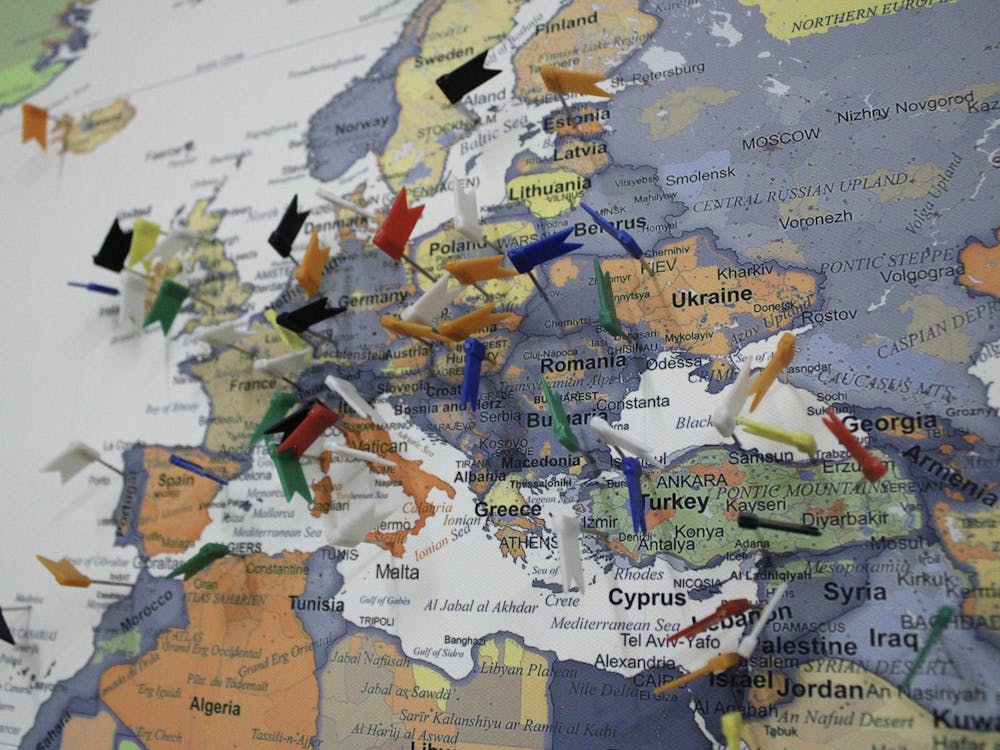UNTIL recently, I thought of my father as your basic pen-and-pencil type of guy. Give him a sheet of paper and some kind of gilded, expensive writing utensil, and he happily will compose pages of fine prose. Although I just am beginning to realize and appreciate this now, I gained early exposure to my father's penchant for handwritten communication.
When my sister and I were kids, we'd leave this ridiculous plate of goodies for Santa Claus every Christmas, along with a characteristically dramatic epistle to the Jolly Man himself: Dear Santa, We love you. Eat the cookies. Write back soon. Love, the Girls.
The next morning, we'd rush from our bedrooms to discover the empty plate and -- gasp! -- Santa's reply to our note, neatly rolled up and tied with a ribbon. OK, so Santa's handwriting slanted in exactly the same direction as my father's, but there were extra curlicues on all the capital letters, which made the whole thing legit.
That note, in fact, was enough to silence the whole Santa: Fact or Fiction? controversy that rocked the schoolyard every year. No kid could argue with our mountain of physical evidence. Armed with an actual sample of the elusive St. Nick's penmanship, my sister and I remained staunch supporters of the whole Christmas mystery, convincing other kids to "keep the dream alive" for just a little longer.
Over the years, we got hip to the nuances of my father's handwriting -- the bold strokes, sloping capitals, and the funny, old-fashioned way he formed the letter F. At some point, our notes from Santa became typewritten confections on tissue-thin paper: Dear Girls, Santa's hands are too cold to hold a pen. I borrowed your Daddy's typewriter. Merry Christmas. It was pure genius. Only the handwritten signature betrayed who had been the letter's real author. True to childhood innocence, however, my sister and I never suspected a thing. It took us a few years to figure out what really was going on. In the interim, we enjoyed the best Christmases.
I know what you're thinking -- it's October, moron. Unless your name is Tiny Tim, spare us the sappy Yuletide memories. Ordinarily I'd agree with you and clam up, but there's good reason behind my nostalgic ramblings. You see, a few weeks ago I logged onto my Simeon e-mail account and found a very interesting note in my box. It was from my father, and amounted to his first-ever attempt at electronic correspondence. After much consternation, and many fountain pens, he finally had decided to invest in a personal computer.
Stunned, I finished the rest of his note, then scrolled up to re-read it from the beginning. Yep -- the tone was the same as I remembered from all those long-ago notes that now filled my childhood scrapbooks. The information superhighway finally had reached my father's doorstep. As much as I welcomed his leap into the digital blue yonder, however, getting that e-mail amounted to a sad moment for me. With e-mail being such a convenient system of communication, I realized I wouldn't be receiving many more handwritten notes from home.
Call me old-fashioned, but there's something about snail mail. I love going to the mailbox and taking out a generous handful of letters from friends and family. It's just so much more personal than electronic communication. There's an intimate quality attached to the act of writing a thoughtful note to a particular loved one. You have to take time, choose the right words, maybe even use the good stationary. You have to think about the person to whom you're writing, and craft your words with care.
Reading a handwritten note has its benefits, as well. As you peruse the text, your eye attunes itself to the other person's handwriting. By the end, you know how she crosses her Ts, how her pen luxuriates in the slope of a capital L, and loops the singular penstroke that forms a lower-case E. Such familiarity lends an inexplicable sense of knowing to the act of reading even the simplest note.
On the other side of the coin, electronic correspondence has too much room for cutting corners. While the immediacy of the computer screen ensures more continuous contact with people over a wide geographic area, the quality of correspondence often is more superficial. It's just too easy to compose slap-dash letters, to write something without crafting the words. In addition, I've noticed that people make more spelling and grammatical errors in e-mails than in handwritten notes. For some reason, it's like the rules of punctuation, syntax, and capitalization suspend themselves in cyberspace.
Truly, e-mail is a valuable tool for contacting people quickly, but we should not get too used to it. I encourage everyone to take some time out and write a letter by hand. The University Bookstore has a whole rack of postcards; buy a couple and send them out. I guarantee you'll find yourself spending more time to communicate in meaningful ways.
(Kiki Petrosino's column usually appears Wednesdays in The Cavalier Daily.)






